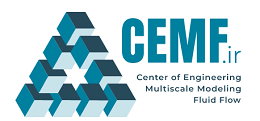Many industrial processes like granulation, particle coating, bio-mass pyrolysis, dryers contain rotating drum as a part of their processes. its rotation cause a gentle motion of particles. So, this gentle motion brings particle to the bed surface, where particles avalanche from top to bottom. The drum wall pulls particles up from the bottom of the bed. The laminar flow of particles in this bed, create a good condition where the a narrow distribution of surface time of particles is desirable. However, the mixing can be poor in the rotating drum and de-mixing (segregation) due to size difference, density or shape may be an issue.
You see the discrete element method (DEM) simulation of non-spherical particles in a rotating drum. 6-degree of freedom motion of non-spherical particles is simulated in a rotating drum. The drum rotates at 12 rpm and its radius is 20 cm. The flow regime in this drum is rolling. A mixture of ovals, cylinders, cuboids and tablets are present in this simulation. The simulation has been performed by discreteFlow our in-house parallel code.
* Follow this link if you cannot see the video properly.

Hello! How can I apply rotation to the cylinder in OpenFoam. Could you share this case?
Hi. Note that this is not an OpenFOAM simulation. It is a DEM simulation performed by our in-house code. I have not seen any standard solver for gas-solid reaction where the fields in the solid particles are resolved. You may need to write your own code.
Hello,
Thank you for posting this tutorial.
May you tell me is this simulation done using OpenFoam or you used another software.